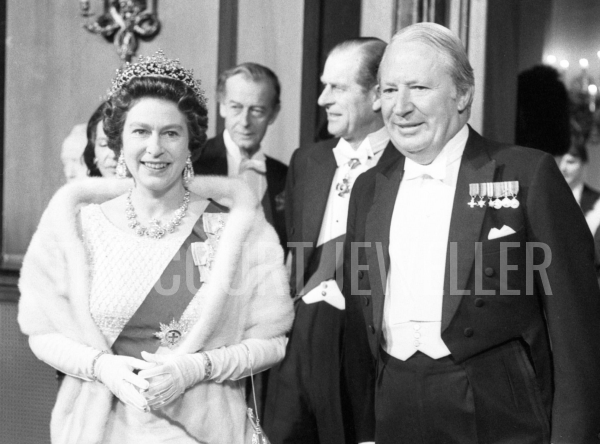 |
| Image licensed to The Court Jeweller; do not reproduce |
The tiaras that Queen Elizabeth II has worn throughout her lengthy reign have all come from the royal vaults — with one very interesting exception. Today, we’re talking about the Plunket Tiara, a piece which unexpectedly came to HM’s rescue one night in early 1973.
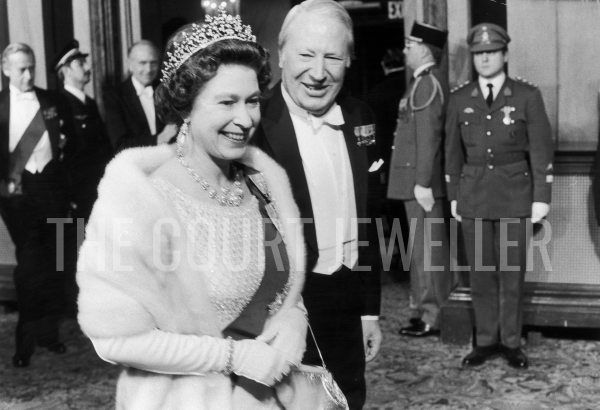 |
| Image licensed to The Court Jeweller; do not reproduce |
On January 3, 1973, the Queen helped ring in a new year and a new era for the continent at the “Fanfare for Europe” gala, held at the Royal Opera House in Covent Garden. The event was part of the celebrations marking the Britain’s entry into the Common Market. But on the way to the gala, the Queen, who was dressed to the nines, suffered a rare jewel malfunction when her tiara broke.
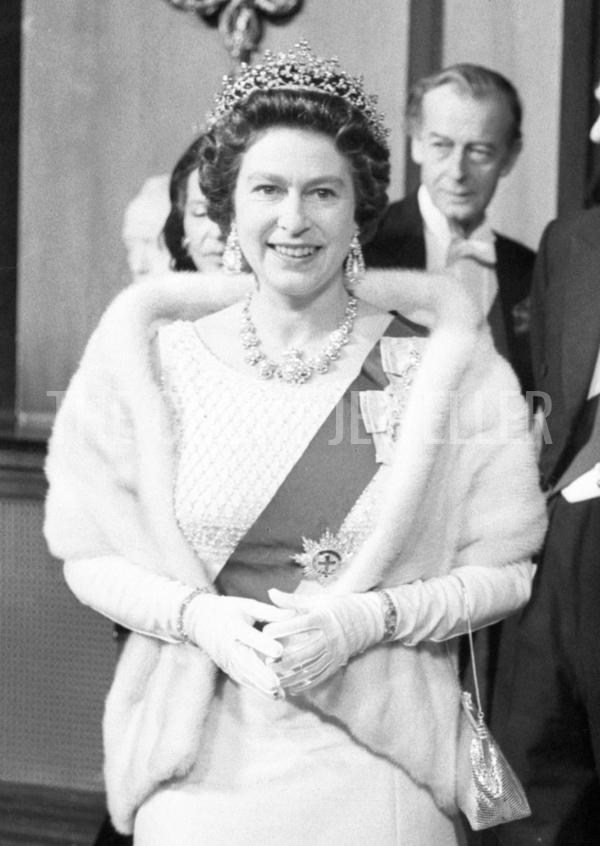 |
| Image licensed to The Court Jeweller; do not reproduce |
There was no time to return to the palace and retrieve another tiara, but one of the Queen’s courtiers and closest friends came to the rescue. Patrick Plunket, who was both the 7th Baron Plunket and a central member of the royal household, lived nearby, and he was able to run home and grab his family’s diamond tiara for her to wear. The Queen placed it on her head and arrived at the gala as if nothing had happened at all.
This color photograph from the evening shows a bit of the glitter of the Plunket Tiara’s diamonds. The Queen, who was escorted by Prime Minister Edward Heath, didn’t just face tiara problems on her way to the gala; news reports note that she and Heath were booed by protestors as they arrived at the opera house.
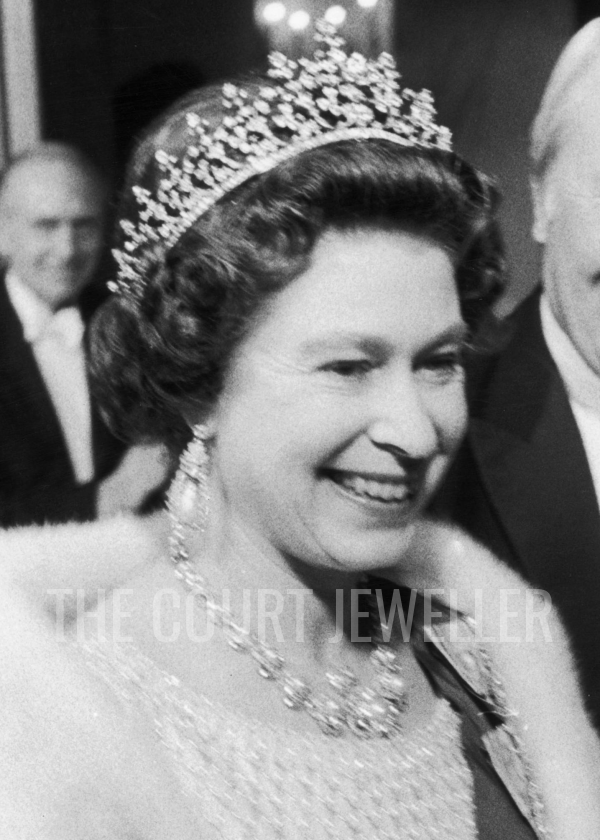 |
| Image licensed to The Court Jeweller; do not reproduce |
This closer view of the tiara, taken as the Queen swept into the opera house, shows some of the diamond detail of the piece. We know a little about the tiara swap thanks to some clever sleuthing done by Cynthia, a member of the Royal Jewels of the World Message Board. (You can read her original message on the subject here.)
The tiara loan is just one small anecdote from the Queen’s fascinating, lifelong friendship with Lord Plunket. In 1974, she made him a Knight Commander of the Royal Victorian Order (perhaps partly as thanks for the tiara help?). Sadly, Plunket died of cancer in 1975, but even in death, his importance to the Queen was underscored. He was buried in the royal family’s private grounds at Frogmore, and the Queen commissioned an impressive memorial in his honor in Windsor Great Park.
(Oh, and one more tiara-related sidenote re: Lord Plunket. He was an accomplished art collector who had an excellent eye. In 1959, he was the person who found out about the sale of the Poltimore Tiara and advised Princess Margaret to buy it. In the literature from the Christie’s auction of the tiara in 2006, the piece is even referred to as “Patrick’s tiara,” suggesting that Margaret herself called it by that name.)
One question remains, though: which of the Queen’s tiaras was damaged on the way to Covent Garden that night? We don’t know for sure, but thanks to the Queen’s tendency to repeat favorite combinations of gala jewels, we can make a pretty good guess. She also wore the Gloucester Pendant Earrings and Queen Victoria’s Golden Jubilee Necklace for the gala, and the tiara that she usually paired with those jewels in the early 1970s was the mighty Vladimir Tiara.
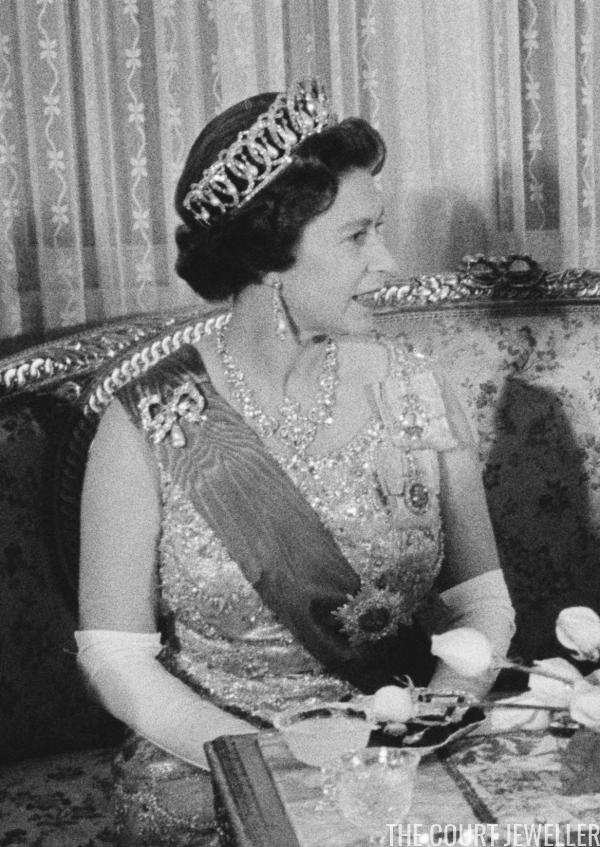 |
| David Cairns/Daily Express/Hulton Archive/Getty Images |
In fact, the Queen wore that exact combination of jewels twice the previous autumn, for state banquets in Yugoslavia (hosted by President Tito on October 20, 1972) and in Britain (where she welcomed President Heinemann of West Germany to Windsor Castle on October 24, 1972).
We also know that the Vlad, which was nearly a century old at this point, was showing its age significantly. It had already been significantly repaired once by Garrard (in 1924, following damage incurred when it was smuggled out of Russia), and in 1988, the frame of the tiara had to be completely rebuilt. I wouldn’t be surprised at all if there were breaks and repairs along the way — including perhaps on this occasion.
Leave a Reply